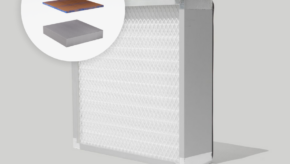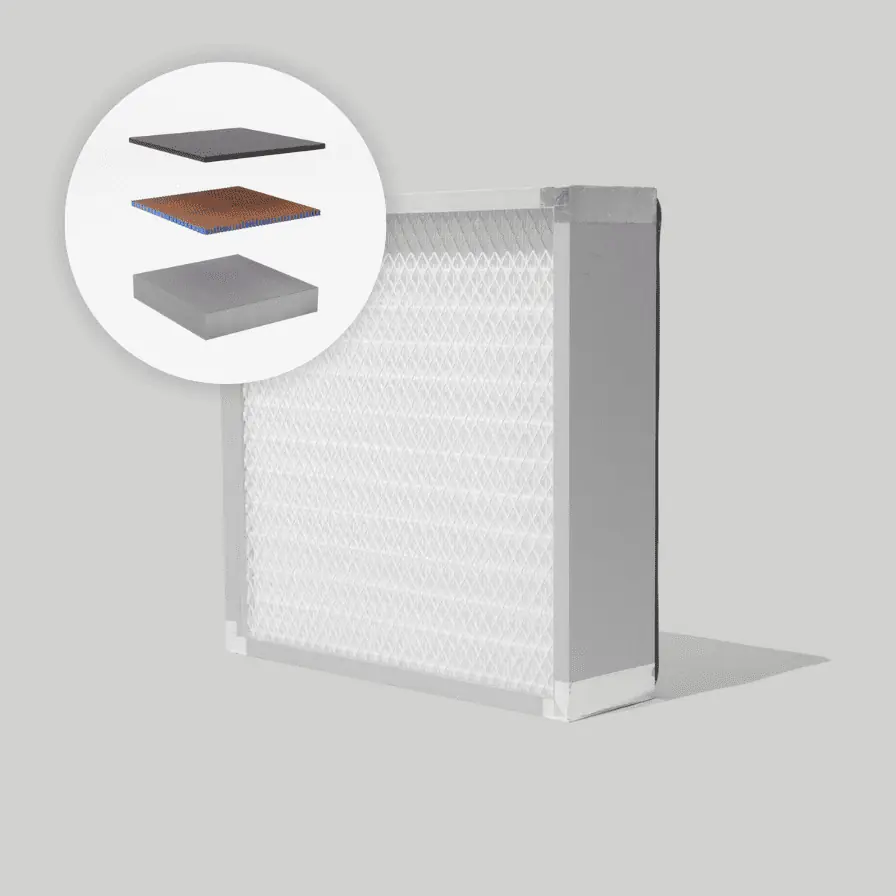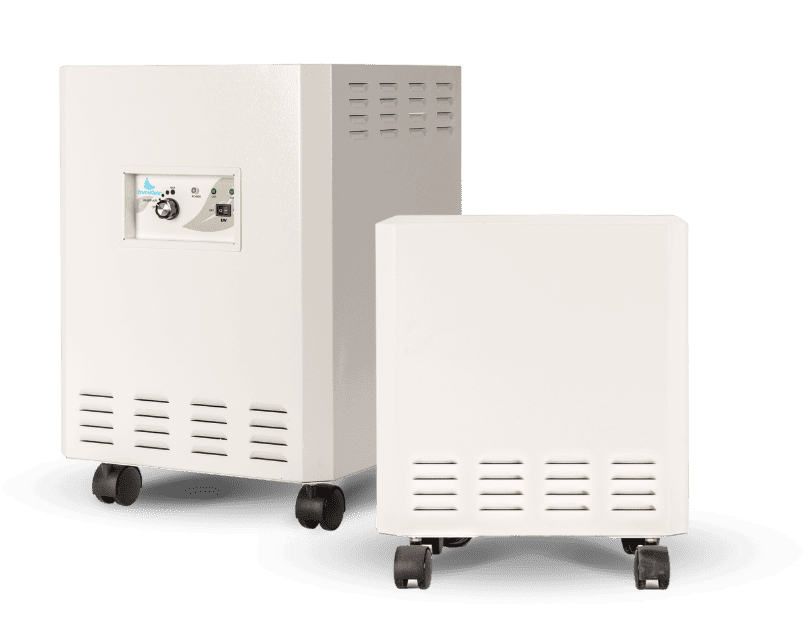Throughout time many aspects of daily life have been closely examined and improved upon through research and trial-and-error. Whether it be examining the food we eat and the modifications that can be made to improve daily diet, the results of routine fitness and the impact it has on the human body, and the effects of indoor air pollution and the different ways humans can make their air as clean as possible.
Indoor air quality concerns have risen over time, with more and more scientific information and studies available that show the increasing dangers that indoor air contains over that of outdoor air. The Environmental Protection Agency (EPA) found that the average American spends close to 90 percent of their time indoors, and this environment’s air is typically 2 to 5 times more polluted than that of outside air. These discoveries about indoor air quality have led to an influx of air purifiers that have been brought to the market to provide consumers with a mitigation tool to improve indoor air quality.
Air purifiers currently available today for consumers mostly utilize a few popular technologies within the air systems, these technologies include ozone, HEPA, carbon, PECO, and ionizers. Air ionizers are a fairly prominent type of air purifier that many air purifier companies use inside their systems, however, they are also an air purification technology that has gained attention for the potentially hazardous effects it produces into the environment, effects that can be possibly dangerous to human health.
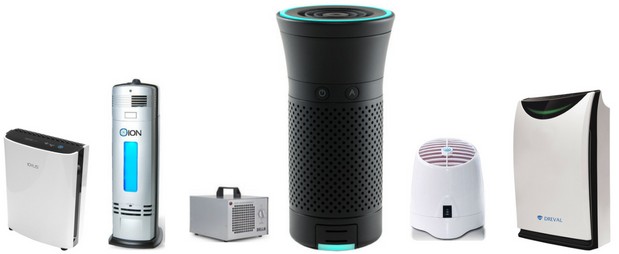
We will take a more in-depth look at the technology of ionizers and how this purifier may be an undesirable option when shopping for your home.
Ionic Air Cleaner: What is it & How Does it Work
Initially, when air purifiers became a hot topic within society, ionic purifiers were the desired choice as they provided a quiet, energy-efficient air purifier that did not require replacement filters – which many found to be economical. However, after extensive research it was found that the process in which ionic purifiers go through can produce hazardous contaminants into the indoor air, acting counterproductively.
First, let’s break down the actual technological process that ionic air cleaners go through when filtering out indoor contaminants. Ionic air cleaners work by emitting a steady stream of negatively charged ions into the air, these negative ions attach to an airborne molecule, making them negatively charged and attractive to nearby positively charged particles. When attraction occurs clumps will form, consequently collecting the pollutants and other contaminants that are found in the air. After this process has concluded, the molecules will become heavy and fall to the ground or on nearby surfaces, forming dirty surfaces in the area around the ionic purifier.
Ultimately, what these ionizer air purifiers are constructed to do in the indoor environment is to purifier the air by electrically charging the air molecules. Other air purifiers will use fans and filters to remove the potential contaminants in the air, whereas air ionizers use ions to remove particulates, microbes, and odors from the air.
Types of Ionizer Purifiers
Ionizer air purifiers contain two variations, electrostatic precipitators and ion generators. Both of these types of ionizer air purifiers each have different features and functions that work conversely from each other. What are the differences, and which is the inferior type when it comes to ionizer air purifiers? We are going to break down these differences between electrostatic precipitators and ion generators down below.
The two different air cleaners for ionic purifiers are electrostatic precipitators and ion generators.
Electrostatic Precipitators
Electrostatic precipitator ionizer air cleaners work by dispersing charged ions into the air, this is done by using corona discharge. Coronal discharge is an electrical discharge that is brought on by the ionization of a fluid such as air surrounding a conductor that is electrically charged. The ions that are dispersed into the air will attach to airborne particles, and over time are collected onto an oppositely charged flat plate.
This type of ionizer is primarily what is used in the market with most ionizer air purifiers. With electrostatic precipitators, the appeal stems from the ability to simply take out these plates inside the system and wipe out the collected particles, such as dust or other pollutants that were collected from your indoor air.
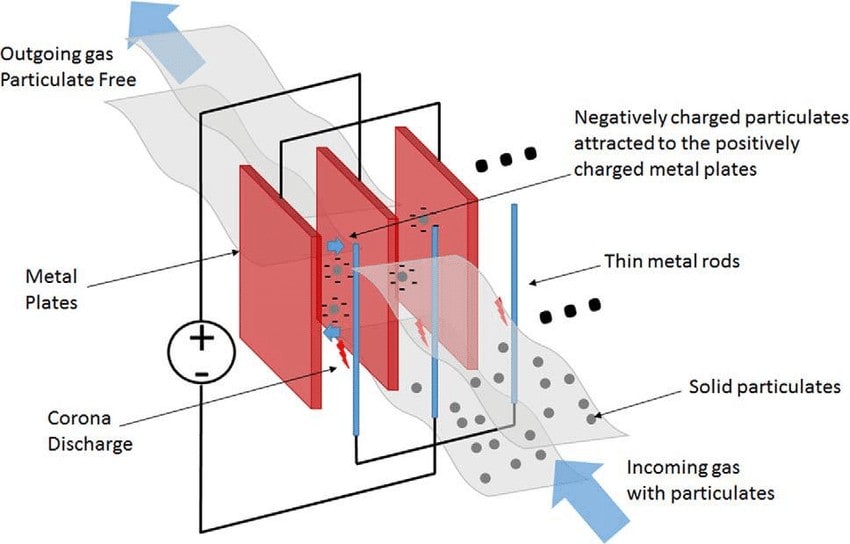
Ion Generators
Ion generators, in comparison to electrostatic precipitators, often disperse charged ions into the air without the use of collecting plates. These generators will produce ions either by corona discharge or through UV lights. A few ionizer air purifiers are constructed with this technology and they often differentiate themselves through advertising where they highlight the benefit of not having to deal with collection plates.
This may leave you with the question of where the dirty particles end up. The answer is that the pollutant particles become stuck on the surfaces in the room such as your walls, tables, bed, and other furnishings within the environment.
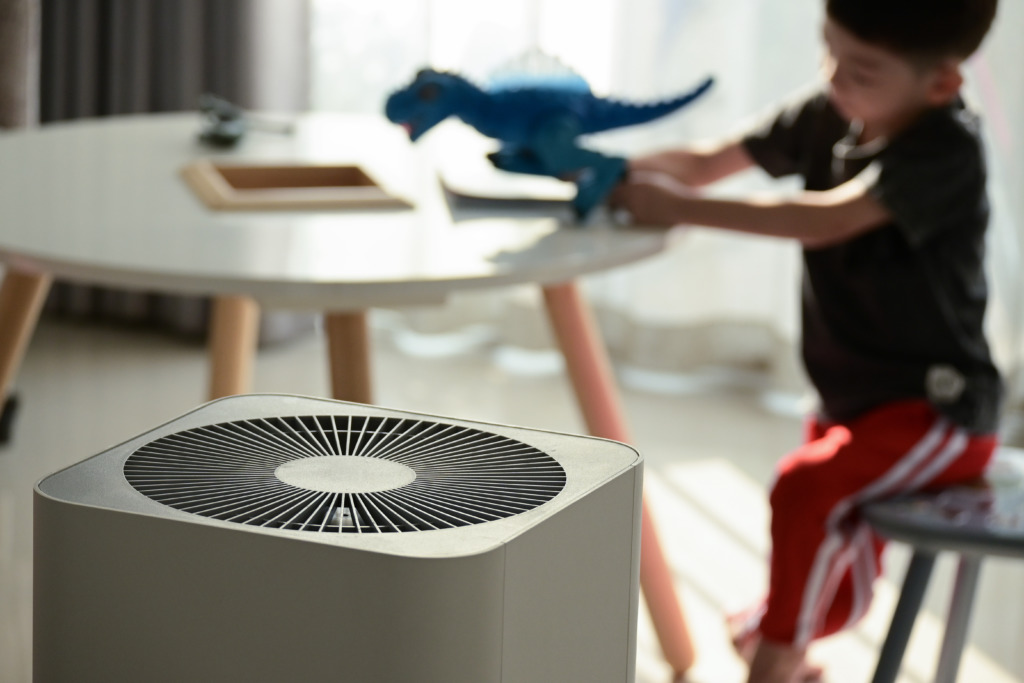
Are Air Purifiers with Ionizers & Ions Safe?
When you are getting ready to purchase an air purifier, particularly an ionizer air purifier, it is customary to do your research and gather the most data you can to make an informed decision. Upon researching ionic air purifiers, you will come across a plethora of information, a fair portion that will discuss the potential dangers that these air purifiers present in the indoor environment. It is no surprise that the technology behind ionic air purifiers can pose health concerns, as it emits something back into your air – something that until research was conducted was not known to be emitted and that adversely affects human health.
Through the ionic technology process, a flood of negative ions is pumped into the air, leaving people to question whether or not it is bad for your health if you are exposed to or inhale these ions. Inhalation or exposure to negative ions is fairly safe for humans, as negative ions are already naturally occurring in our environments from sources such as sunshine, lighting, and waterfalls. However, it is the production of ozone from these ionic air cleaners that pose a risk to human health.
Ozone Emission from Ionic Air Filters
When we think about ionic air filters and air purifiers many people will recall the infamous Sharper Image Ionic Breeze, an electrostatic precipitator ionizer air purifier that was found by Consumer Reports to have produced high levels of ozone, a byproduct created because of the ionizer process. Ozone, according to the EPA, is a dangerous byproduct that can cause harm to the health of those exposed such as chest pain, coughing, shortness of breath, and throat irritation.
Many ionic air filters work by generating a large voltage difference across some volume of air, which creates ozone emission in varying degrees. As this issue has been brought to the forefront, many air purifiers that utilize ionic air filters have tried to reduce their ozone output. If you have to purchase an air purifier using ionizing technology, it is critical to look on the manufacturers’ page for details on whether or not the device produces ozone, or if they attempt to reduce ozone production. However, it is recommended to avoid these ionic air filters and purifiers altogether to minimize health risks and exposure to ozone emissions.
Ions Purifier Side Effects
The ionizer air purifiers that produce and emit ozone into the air can leave about of health side effects to those exposed to the dangerous byproduct. When you inhale ozone, even in trace amounts, side effects can start that will include the following:
- Irritation to the lungs
- Coughing
- Chest pain
- Shortness of breath
- And Increased risk of respiratory infections
Also, if an ionizer air purifier is used in an environment where an asthmatic person is present, particularly one that emits ozone, it can significantly affect and trigger an asthmatic attack.
Ionic Air Purifier vs HEPA Air Cleaners
Are you curious as to the differences between an ionic air purifier and a HEPA air purifier? While both of these technologies clean the air from contaminants and other indoor pollutants, they operate in two completely different ways. The major difference between these two technologies is in fact the way in which they work to remove contaminants from the air.
Ionic air purifiers, as we discussed earlier, send out electrically charged ions into the air that bond with the harmful pollutants in the air. Usually, the particles that they are able to attract are bigger, about 10 microns in size are larger and they are collected on a collection plate that needs to be cleaned once full. This technology does not utilize a fan, and in most cases, they will produce O3. (ozone) a harmful byproduct into the air.
Whereas a HEPA air purifier operates by sucking air into the device through a dense, physical filter that traps the airborne contaminants. It then will push out clean air into the environment through the use of a fan. This technology is able to capture particulate matter 0.3 microns are larger, allowing it to trap more pollutants than that of ionizer air purifiers. These purifiers, though, require regular maintenance of their filters, usually, replacement is every 2 to 3 years.
Overall, the decision is yours but in performance, a hospital-grade HEPA filter and HEPA air purifier will outperform an ionic purifier, and it will not release harmful byproducts back into your air.
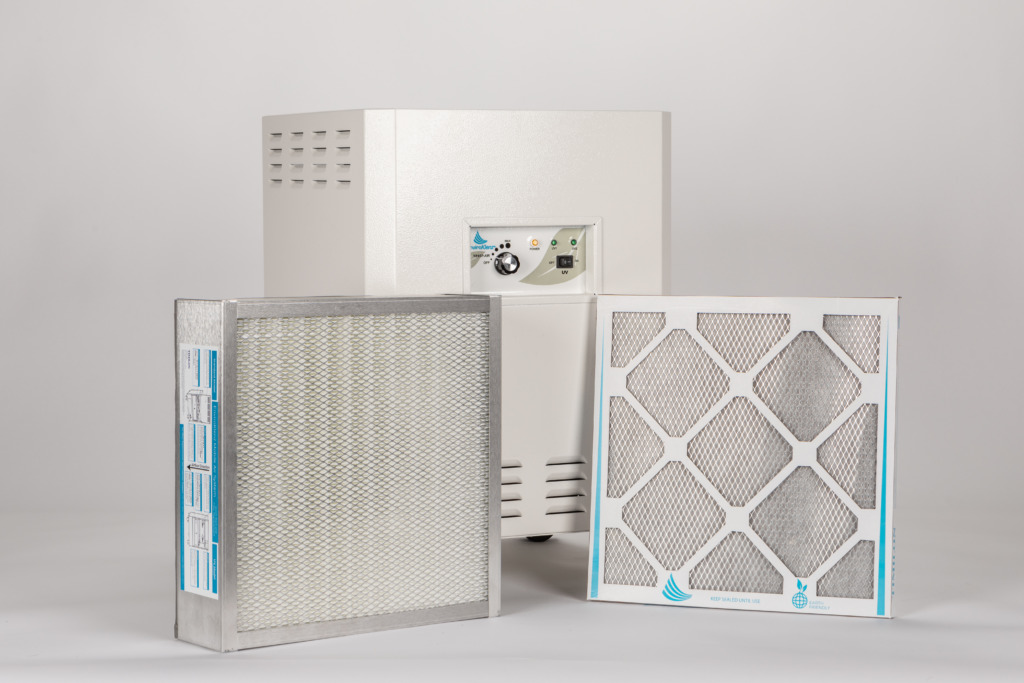
Conclusion: Air Ionizer Dangers
The staggering information on the potential dangers presented by ionizer machines in your environment is scary. The emission of ozone into the air that you breathe is not only hazardous to your health but dangerous to the quality of the air in the environment.
Many manufacturers often utilize ionizing technology into their air purifiers to add to the features of their machines to bump up the price of the system. Although this might seem logical, the evidence against the effects of this technology may actually do the company a disservice. As more and more information is released and presented to the public about air ionizer dangers, the more informed consumers will be before they go to make an air purifier purchase, and chances are they will know and avoid these potentially dangerous ionizing air systems.
Update: Risks of Ionizer Air Purifiers in 2021
In the recent months of 2021, new data pertaining to the hazards surrounding electric air cleaners has surfaced, and it has led organizations like ASHRAE and the CDC to share their recommendations on how to address electric air cleaners and ionizer air purification. Gathered from several studies is supporting evidence that ionizers lack accurate research and test standards to prove their effectiveness and safety. An open letter written by Dr. Marwa Zaatari, ASHRE board member and member of the Epidemic Task Force, addresses these concerns, urging many school districts to avoid investing in these types of purifiers for their facilities’ precautionary efforts and wasting limited pandemic-relief budgets.
Through the data in a recent study conducted by Portland State University, Illinois Tech, and Colorado State University, it was revealed that many forms of electronic air cleaning technology fail to get tested by federal agencies or industry standards organizations for potential chemical byproduct production and overall efficacy. Specific testing on ionizer performance concluded that the partial decomposition of some hydrocarbons does not beneficially outweigh the increased production of certain harmful VOCs, and exposure to negative ions and byproducts created with this technology can cause negative health effects like systematic oxidative stress levels. Within the open letter, Dr. Zaatari also touches on the relation between electronic air cleaning mechanisms like photocatalytic oxidation (PCO) and the consequential generation of one or more byproducts through this type of system design; these include reactive oxygen species, gaseous hydrogen peroxide, hydroxyl radicals, and ozone to name a few. This data from the study and Dr. Zaatari fills in some of the gaps created by electronic air cleaning producers who cannot provide adequate testing or support for their own technology in terms of its safety and effectiveness.
Inconclusive data on the benefits of ionizers, as well as solidified evidence of the health hazards that any exposure to ozone byproduct induces, leads ASHRAE to encourage consumers to fully educate themselves on the facts of air purification measures before settling on a choice. The open letter additionally asks that school districts do not use existing electronic air cleaners or prepare to purchase systems of this type of technology, but rather seek proven methods like HEPA filtration, mechanical and natural ventilation, and germicidal ultraviolet light systems to put their relief money towards. While schools are the topic of this current address, these standards can apply to all facilities, organizations, and even residential environments, as safety measures of indoor air quality, are relevant and applicable to everyone and should be of concern when health conditions are potentially at risk.
EnviroKlenz® Medical Disclaimer:
“Any information that is provided on this website is not for the use by any commercial or personal entity without expressed written consent of the blog author. The material and statements illustrated within this blog are not intended to diagnose, treat, cure, or prevent any diseases or medical conditions. Nor does the author in any way guarantee or validate the validity, totality, or efficacy of any claims and will therefore not be held responsible for the content of any claims. Always consult your medical physician for any specific medical advice or recommendations.”

